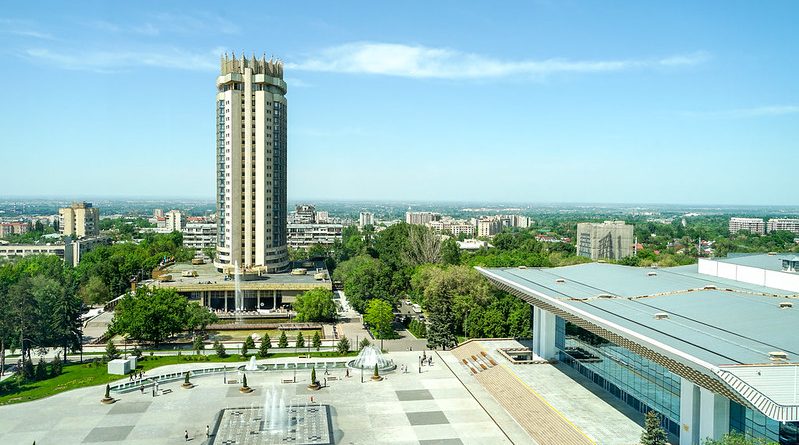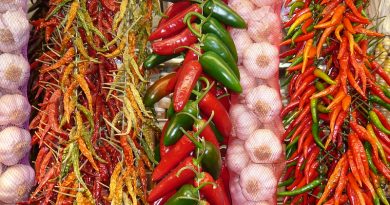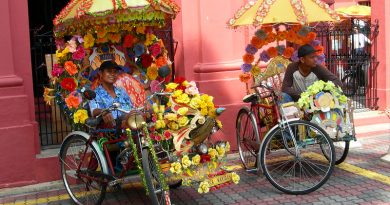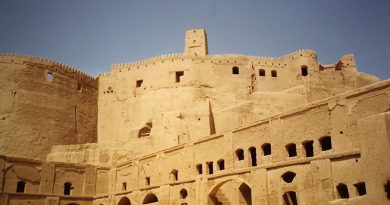Kazakhstan Destinations
Travel Warning:
Some parts of Central Asia can be unstable: check current government advice before travel. Ongoing military operations in the region mean Western tourists can be the target of terrorism.
About Kazakhstan
Kazakhstan is the ninth largest country in the world, roughly comparable in size to most of Western Europe or around half of the United States. It spreads over two time zones and ranges in topography from the West Siberian lowlands to the desert of Kyzylkum and the vast, inhospitable ranges of Tien Shan and the Altai Mountains.
Due to ongoing political and social unrest throughout Central Asia, now may not be the best time to travel independently to Kazakhstan. It is advisable to travel as part of an organised tour, or at the very least, seek current foreign office advice before planning your trip.
Kazakhstan is split into fourteen regions with special status awarded to Leninsk and Almaty, the former capital. The official language here is Kazakh, however, as with much of Central Asia, you will find Russian spoken as the mode of inter-ethnic communication.
With a landscape relatively unchanged since the days of Genghis Khan, Kazakhstan still retains its natural charm. The vast and desolate plains are intermittently broken by isolated cities, dotted throughout the desert. Much of these towns are remnants from the Soviet era, and the bleak, industrial wastelands do little to draw the visitor but look deeper to find a welcoming populace, stunning scenery of mountains and deserts and some fascinating historical mausoleums. The country’s biggest asset remains its vast oil and gas reserves lying below the desert, potentially making the country very rich.
The varied topography of Kazakhstan creates a contrasting landscape. From the vast plains and deserts filled with interminable steppes through to the inaccessible snow-capped peaks, there are many sights and activities to keep most travellers in awe of this beautiful country. Combined with its long, difficult history of occupation and the legacy of war, Kazakhstan has many lingering monuments and mausoleums that will entice and intrigue the traveller.
Kazakhstan is a fantastic landscape for trekking and hiking, with its rugged mountain ranges, and pristine lakes, it makes for some spectacular scenery. The best time to trek is between June and September when most of the higher passes are clear and the climate is moderate.
Along with Central Asia’s love affair with horses, horse riding is also a popular activity. You can either mount up yourself and trek along some routes, or even watch and take part in the many local competitions. Equestrian sports are particularly popular in Central Asia, and include games such as baiga, kiz-kuu, and kokpar.
Kazakhstan Locations
Almaty
Almaty, formerly the capital of Kazakhstan, was founded in the mid-nineteenth century. Originally a Russian frontier post, it remains the country’s premier city. Almaty’s translation, ‘Grandfather of Apples,’ comes from its many orchids which produce peculiarly huge apples.
The main street, Tole Bi, which runs through the town from east to west, is where most of the government buildings are plus some cinemas. The shopping district runs along Zhibek Zholi(Silk Road), and the nearby Panfilov Park (named after the heroes of World War Two) is home to the beautiful Zenkov Cathedral. This six story wooden building is built entirely without nails and is reputed to be the second tallest wooden building in the world. The cathedral is one of the few buildings to survive the 1911 earthquake which destroyed much of the city.
Just north of the park is the main bazaar, selling fairly standard Western goods, and a fruit and vegetable market. Almaty has a number of reasonable exhibitions including the Central State Museum, which houses archaeological finds, the Museum of Folk Musical Instruments, and the State Art Museum. A large number of gold handicrafts can be viewed in the Golden Hall of the Central Museum of the Republic, including a miniature replica of the Golden Man, the country’s chief archaeological treasure. It is a warrior’s costume made from 4,000 pieces of gold, each decorated with ornate animal motifs.
For a relaxing break, head to the Arasan Bathhouse. It’s the perfect place to rejuvenate, with its white marble baths divided into Turkish, Russian, and Finnish spas. As for nightlife: don’t expect anything too wild. New restaurants, bars and casinos are opening up, but it is still fairly limited.
Almaty is a green city with plenty of parks and open spaces. Street cafes are to be found all over town and along its long, straight avenues. The modern city is said to lie on the ancient settlement of Almaty, which dates from third century B.C. Around 1845, it was developed into the frontier post of the Russian Empire, and artefacts from the city’s ancient roots can be seen, including the remains at the Issyk burial place, about 50 miles from the city.
Around Almaty
For the more active travellers, the Medeo Ice Stadium, ten miles above Almaty, hosts many international skating events in one of the world’s largest ice rinks, and it’s a popular hangout for the town’s youth.
If you prefer skiing, check out Shymbulak Ski Resort, with operational lifts and a season lasting November through to April. Hikes are also possible in the surrounding mountains, providing stunning views across the valley.
Altay Mountains
The stark beauty of the Altay Mountains, 450 miles northeast of Almaty, reveals breathtaking scenery: the waterfalls, forests and meadows are naturally alluring and in contrast to the flat, barren lands throughout the rest of the region. The 15,000 feet peak of Mount Belukha marks the point where Kazakhstan, China, Mongolia, and Russia meet. The Buddhists believe that Belukha is a pole of spiritual energy, connected to Tibet and anyone who climbs it will be blessed with longevity and health.
Astana
With a population of around 300,000, Astana became the capital of Kazakhstan in December 1997. Traditionally, the town was an agricultural centre, but its newfound importance was not well received by its inhabitants. The city was founded as a fortress in 1824, but has a severe climate with cold winters and hot summers, when you should watch out for the mosquitoes.
Astana, meaning capital, was renamed from Akmola, meaning white grave. Unlike its southerly neighbour, Almaty, politics is the mainstay here and there is little to attract the independent traveller. Progress is evident in the new hotels that are springing up across town and there are plans to build parks and gardens, by widening the Yesil River that cuts through the centre of town.
Karaganda
The second largest city in Kazakhstan is still relatively new. It is primarily a coal-mining centre and attractions for the visitor are limited to a few war memorials and some mosques and churches.
Kordai
Situated on the main highway between Almaty and Bishkek in Kyrgyzstan, this border town on the old Silk Road is a good base to explore the Chumysh Hills. These ancient hills are about three miles outside of the town and house an impressive collection of 2,000-year-old cave paintings. You will be able to find accommodation in Kordai, however there will not be much else in the town itself to warrant a longer stay.
Leninsk
In an otherwise bleak setting, Leninsk is the original site from where the Mir Space Station was launched. This 40-year-old settlement is home to the Baikonur Space Center, however tours around this site are now mostly prohibited. Rumours abound that it will eventually be closed permanently.
Semey
A distinctly Russian-influenced town close to the Siberian border, Semey holds the legacy of extensive underground nuclear testing. For the less squeamish traveller, the exhibitions at theAnatomy Department of the Semey Medical Faculty show examples of the mutations that resulted from the testing. There are also museums in Semey honouring Russian author Fyodor Dostoyevsky and Kazakhstan’s leading literary son, Abay Qunanbaev.
Shymkent
Primarily a polluted industrial city, Shymkent is most notably home to Astrakhan coats. You can see how the sheepskins are processed in the Karakal Sheep Breeding Museum or use this town as a base to visit the beautiful Khodja Akhmed Yassawi Mausoleum in nearby Turkestan. Considered one of Kazakhstan’s cultural treasures, the Mausoleum is considered something of a Mecca. Khodja Akhmed Yassawi was a holy Islamic person and his huge, domed tomb is one of the most stunning architectural constructions in Central Asia, which was begun by Tamerlane in the 1390s. It houses a sacred two-ton vessel, made of seven metals and used for storing holy water.
Taraz
With a selection of interesting sites, including several mausoleums, this industrial city is also the site of the historical Battle of Talas. The mausoleums of Kara Khan and Shamansur are nearly 1,000 years old, with beautiful terracotta exteriors carved in a way that makes the building appear as if it is made of straw.
In 751 A.D. there was a war for control of Central Asia between the Arab Ummayad and the Chinese Tang Dynasty. With the Arab victory, the Chinese no longer had influence in the region and Islam was introduced. This particular battle marked the limit of Chinese influence to the East. It was the Chinese Prisoners Of War who were ordered to produce paper in Samarkand, thus introducing the technology to Central Asia and the Middle East.
Aksu-Djabagly Nature Preserve
A UNESCO biosphere preserve, Aksu-Djabagly is the only site with this status in Kazakhstan. It is also one of the oldest nature reserves in Central Asia, established over 75 years ago. It is at its most beautiful in spring when rare flowers bloom over the mountains and forests. In particular, the region’s wild tulips enhance the stunning natural beauty of the rivers, steppes, and fresh springs.
238 bird species call Aksu-Djabagly home, including nine protected ones such as the Egyptian vulture, golden eagle, and black stork. Other animal species you may see prowling the canyons within the reserve are brown bears, wild sheep, and – if you’re lucky – a snow leopard.
The preserve can be reached from the nearby village of Djabagly or the Tulkubas railway station, about 60 miles from Shymkent or Taraz. While you’re in the area, check out theKaratau Mountains, the Chokpak Ornithological Observatory, and the nearby Moyinkum Desert.
Altyn-Emei National Park
With its topography unchanged throughout history, this national park is scientifically and culturally unique. It was founded in 1961 and spreads out over an impressive 73,300 hectares. Within this park, plants number 137 varieties and there are 200 types of birds. You’ll find 29 species of animals including sightings of rare red bears, Turkestan lynx, and endangeredsnow leopards, among the slightly more numerous gazelles, goats, wild sheep, and boars.
Within the national park is a desert-like section in the valley of the Ili River, popular for itssinging sands. These unusual sand dunes, reaching heights of 500 feet, make a sound like that of an airplane. As you walk past, the sand from beneath your feet sweeps down the steep dune and a buzz emanates from deep within the sand. The dunes themselves lie between the mountain ridges of Ulken-Kalkan, yet no one knows quite how they originated. Peculiarly, the sand does not move along the plain – instead it stays in the same place for thousands of years. For thrill seekers, it is possible to ski down the slopes.
Kol-Sai Lakes
These three lakes are located in the mountains between 6,000 and 8,000 feet above sea level. Coloured a beautiful sky-blue, they are located in the Kazakh part of the Kungey Alatau Rangeof the Central Tien Shan in the south-east of the country, 160 miles from Almaty. You will find excellent trekking and hiking along the routes around the lakes, with captivating scenery and breathtaking views of the surrounding alpine mountains and lakes. The highest point in Kazakhstan is Khan-Tengri at 23,000 feet, located in the mountains surrounding the Kol-Sai Lakes. Full article: Trekking in the Tien Shan Mountains
Ili River
One of the largest rivers in Kazakhstan, the Ili begins in the Eastern Tien Shan, out of theTekes and Kunges rivers. In total, the Ili River flows 2,150 miles, with 1,222 miles in Kazakhstan. It flows into Lake Balkhash forming a vast delta, with marshes, lakes, and jungle-like vegetation.
About thirteen miles downstream lies Tamgaly, famous for its ancient rock drawings. Close by is the Kapchagay Reserve, home to the Kapchagai Hydroelectric plant. Once you pass this point, rafting is easy enough as the river flows deep and wide. With clear waters and a rapid current, it is an ideal spot for category one rafting. More challenging rafting can be achieved in the Charyn and Chu rivers. Swimming is also popular, along with fishing, as the water is warm from May all through the summer.
Barsa Kelmes
This island, off the North-western Aral Sea Coast, translates as ‘The Land of No Return’, and is home to the kulan, the rarest hoofed animal in the world.
Kurgaldjino Nature Reserve
This A-class nature reserve, located in central Kazakhstan, is of international importance. This is the most northerly settlement of flamingos in the world.
Bayan-Aul National Nature Park
Dubbed the ‘Museum of Nature’, Bayan-Aul National Park is located in central Kazakhstan and offers the visitor rock drawings, stone sculptures, and clean, sparkling lakes.
By Jenna Colbourne




